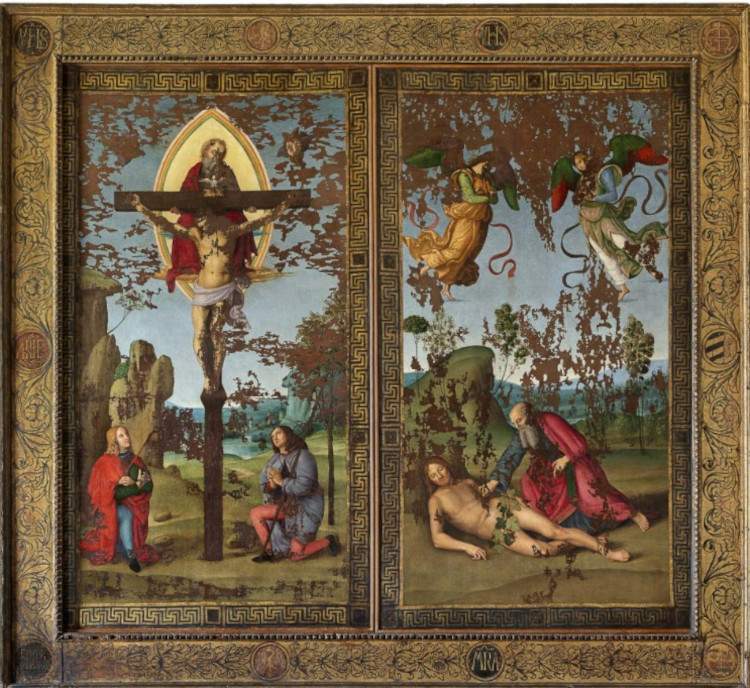An exhibition in Città di Castello on the young Raphael with a permanent comparison with Luca Signorelli
From Oct. 30, 2021, to Jan. 9, 2022, the Municipal Picture Gallery of Città di Castello will present the exhibition Young Raphael and His Gaze, as part of the 500th anniversary of Raphael’s death. Promoted by the Umbrian Regional Committee for Raphael Celebrations, the City of Città di Castello and the Region of Umbria, the exhibition is curated by Marica Mercalli, former Superintendent of Umbria and now director general for the safety of the Cultural Heritage of the MiC, and Laura Teza, associate professor of History of Modern Art at the University of Perugia.
The exhibition aims to tell the story of Raphael’s years in Città di Castello in which he became an independent master, through some masterpieces such as theCoronation of St. Nicholas of Tolentino (1500) and the Gonfalone of the Holy Trinity, up to the end of his Umbrian period with the Marriage of the Virgin (1504).
The fulcrum of the exhibition is precisely the Gonfalone della SS. Trinità, Raphael’s only remaining mobile work in Umbria, preserved in the Pinacoteca and considered by critics to be one of his earliest paintings. A number of works by the Urbino master will return to Città di Castello for the first time on this occasion. "The gonfalone testifies to Raphael’s gradual process of enfranchisement from his master Perugino and direct confrontation with Luca Signorelli," the curators explain. Subjected to a new and important restoration carried out by the Central Institute for Restoration (ICR), the work will remain permanently in the Pinacoteca, in a room where Luca Signorelli’s Martyrdom of Saint Sebastian, in which Raphael had great interest, has also been transferred. Two drawings, now in the Ashmolean Museum in Oxford, bear witness to this. Henceforth the two paintings, the Gonfalone and the Martyrdom, will be shown side by side in the same room, bearing witness to Raphael’s gaze that bound them together forever.
Raphael’s relationship with Signorelli is documented by the presence of the Madonna of Peace from San Severino Marche. Among the works on display are theEterno and the Virgin, kept at the National Museum of Capodimonte and restored for this exhibition, and the head of Angelo from the Pinacoteca Tosio Martinengo in Brescia. Also present are fragments of the painting that saw Raphael’s debut as a master when he was only seventeen years old, returning to the place where they were first painted: the large panel with theCoronation of Saint Nicholas of Tolentino. Of this work, damaged in the 1789 earthquake, a virtual reconstruction will be presented during the exhibition, which will become a permanent installation in the Pinacoteca. Thanks to the use of videos, translated into various languages, the environmental context will also be reconstructed of other works by Raphael created in Città di Castello and now preserved in other places. The exhibition closes with the Marriage of the Virgin (1504), a painting that marks the turning point in Raphael’s career and whose setting is measured against the similar subject that Perugino was preparing for Perugia Cathedral.
Hours: Tuesday through Sunday 10 a.m. to 1 p.m. and 3 p.m. to 6 p.m. Closed Mondays, excluding holidays and pre-holidays, Dec. 25 and Jan. 1.
Pictured is Raphael’s Banner of the Holy Trinity.
 |
| An exhibition in Città di Castello on the young Raphael with a permanent comparison with Luca Signorelli |
Warning: the translation into English of the original Italian article was created using automatic tools. We undertake to review all articles, but we do not guarantee the total absence of inaccuracies in the translation due to the program. You can find the original by clicking on the ITA button. If you find any mistake,please contact us.





























